

Lensbaby Soft Focus Optics
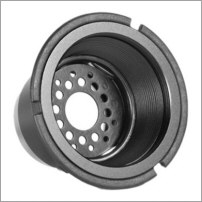 Lensbaby have recently introduced a Soft Focus lens for the Lensbaby (Composer, Muse, 3G and Contol Freak models).
First let's define what "soft focus" means - or rather what it doesn't mean. Well, in this context it doesn't mean out of focus and it doesn't mean not sharp. Technically a soft focus lens is usally a lens with a significant (and deliberate) amount of spherical aberration. Spherical aberration describes a condition where light passing through the outer region of a lens is brought to a focus in a different plane then light passing through the center of the lens.
Lensbaby have recently introduced a Soft Focus lens for the Lensbaby (Composer, Muse, 3G and Contol Freak models).
First let's define what "soft focus" means - or rather what it doesn't mean. Well, in this context it doesn't mean out of focus and it doesn't mean not sharp. Technically a soft focus lens is usally a lens with a significant (and deliberate) amount of spherical aberration. Spherical aberration describes a condition where light passing through the outer region of a lens is brought to a focus in a different plane then light passing through the center of the lens.
So if you sharply focus the light which is coming though the center of the lens, the image will be overlaid by the out of focus image formed by light passing through the outer regions of the lens. That's pretty much it in a nutshell. As you stop the lens down less light passes through the outer regions and the less soft the image becomes.
Here are a set of example images showing the difference between sharp focus, out of focus and soft focus:
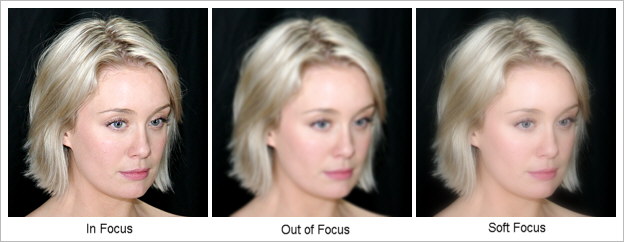
On the left the image is in sharp focus. In the center the image is out of focus. However on the right is a soft focus image. Most of the detail of the sharp focus image is still there, but the contrast is lowered and hard edges are softened. The soft focus effect is often used for "glamor" portraits since it softens the skin and hides blemishes.
The Lensbaby soft focus optic is a 50mm focal length multicoated doublet with a fairly flat field and uncorrected spherical aberration. It covers a full 35mm frame. Having a flat(ish) field means that the lens doesn't really have a pronounced central "sweet spot" like some of the other Lensbaby optics. Wide open it is f2 and it can be stopped down by using the usual Lensbaby scheme of inserting circular aperture disks into the lens. Disks are provided for f2.8, f4, f5.6, f8, f11, f16 and f22. A characteristic of spherical aberration (and hence the degree of "soft focus") is that it reduces with the square of the aperture, so stopping down a small amount can produce a large charge. By f8 or so even lenses that start as very soft focus usually become pretty sharp.
Lensbaby supply three additional aperture disk with multiple holes as shown below.

These disks allow the central aperture to be small and form a sharp image, but the peripheral holes allow some of the rays from the edges of the lens though and these create the soft focus. The effect they give is perhaps "better" (in an aesthetic sense) than the effect from a circular aperture. They can give a sharper main image and a more diffuse "glow". However they can also do strange things to out of focus highlights as shown below.
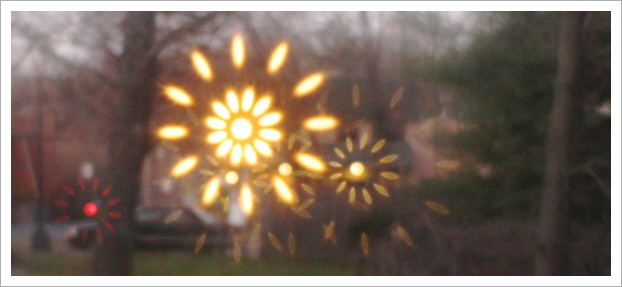
Whether these out of focus patterns add to or detract from the image depends on what you are shooting and what the goal is. They could be used for artistic effect in some images, but in others they may not be particularly desirable. If you like the effect I guess there is no reason why the multi-hole apertures couldn't also be used with the Lensbaby doublet, single element and plastic optics since the aperture disks are all the same size.
Most cameras will allow autoexposure in Av (aperture priority) mode, or you can use manual mode to set the shutter speed. It's likely that you may need to tweak the exposure slighly to optimize the images. I found that using an EOS 5D the autoexposed images were a little dark and so in Av mode I applied a little +ve exposure compensation.
Lensbaby Soft Focus Optics Examples
The following images show the effects of changing the aperture disk.
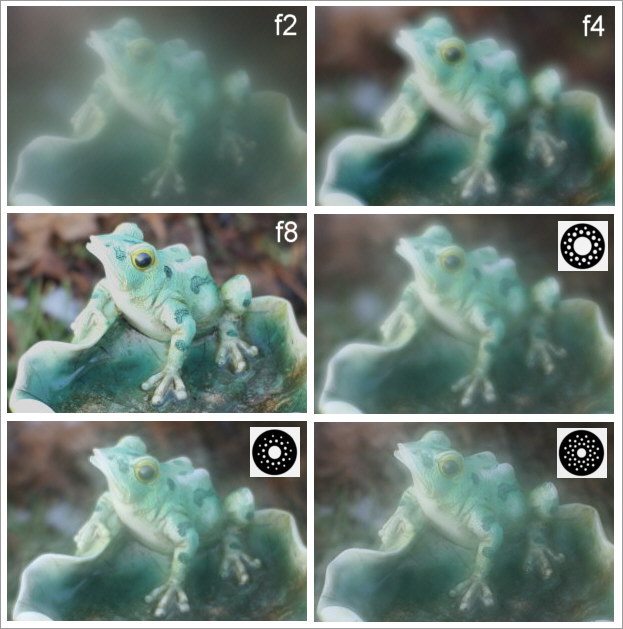
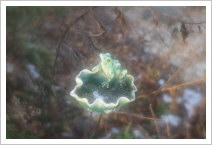 The images above are crops from the scene shown on the left. As you can see, with no aperture disk inserted (f2) the image is very soft with very low contrast. This is probably too much of a soft focus effect for most subjects. Stopping down to f4 by inserting the f4 aperture disk makes the degree of softening more reasonable and you can see a distinct "halo" around the bright regions. Stopping down to f8 (or smaller) pretty much removes the softening effect altogether. The three multi-hole apertures give what I think are more pleasing effects. As the central hole decreases in size the softening effect diminishes and more detail is revealed in the subject. What degree of softening is "best" depends on the subject and the effect you are looking for, but as you can see, by changing the aperture and type of aperture you can select from a pretty wide range of effects.
The images above are crops from the scene shown on the left. As you can see, with no aperture disk inserted (f2) the image is very soft with very low contrast. This is probably too much of a soft focus effect for most subjects. Stopping down to f4 by inserting the f4 aperture disk makes the degree of softening more reasonable and you can see a distinct "halo" around the bright regions. Stopping down to f8 (or smaller) pretty much removes the softening effect altogether. The three multi-hole apertures give what I think are more pleasing effects. As the central hole decreases in size the softening effect diminishes and more detail is revealed in the subject. What degree of softening is "best" depends on the subject and the effect you are looking for, but as you can see, by changing the aperture and type of aperture you can select from a pretty wide range of effects.
Lensbaby Soft Focus Optics Examples
Here's a set of shots using different apertures:
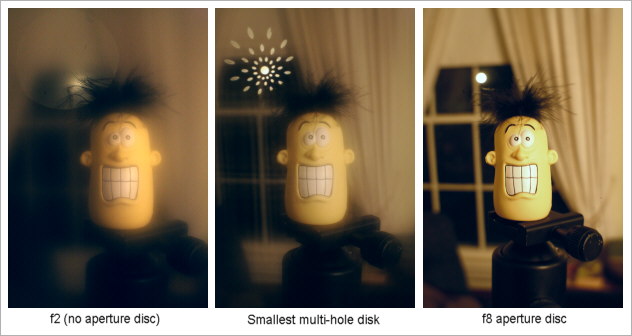
On the left is a shot with no aperture disc in the lens, which means the aperture was around f2. The out of focus highlight is the large circular area at the top left of the image and the diameter is about 1/2 the image width. In the center is a shot using the multihole disk with the smallest central hole (which is about the size of the hole in the f8 disk). Note that the soft focus effect is much diminished from using the lens wide open, but it's still clearly soft focus. The interesting "out of focus highlights" pattern is evident in the background and reproduces the multi-hole pattern of the aperture disk. The shot on the right was taken using the conventional f8 aperture disk and it really doesn't look soft focus. The out of focus highlight is now a small round disk.

Both images shot using the multi-hole apertures with some post exposure tweaking in photoshop
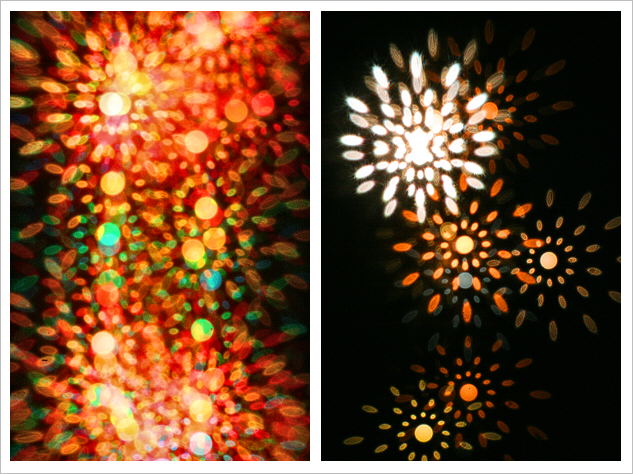
On the left, out of focus Christmas lights, on the right, out of focus street lights
Conclusions
The Lensbaby Soft Focus Optic is an interesting addition the the Lensbaby line. The soft focus effect is quite controllable by using either the standard apertures or the multi-hole apertures. Creative Lensbaby photographers will welcome a new tool in their bag for the pretty modest price of around $80-$90.
You can get a soft focus effect by using a filter on a conventional lens, but that's not always an inexpensive route. For example the Zeiss Softar 1 is $196 in a 58mm size, almost three times the price of the Lensbaby Soft Focus Optic. There are lower priced filters from other manufacturers, but the quality of the softening effect may not be as good.
There are also a few specially designed soft focus lenses such as the Canon EF 135mm f/2.8 SF, but again it's not inexpensive at around $500
Related Articles
- Lensbaby Composer and Optics Kit
- Lensbaby Fisheye Optics
- Original Lensbaby Review
- Lensbaby 3G review
